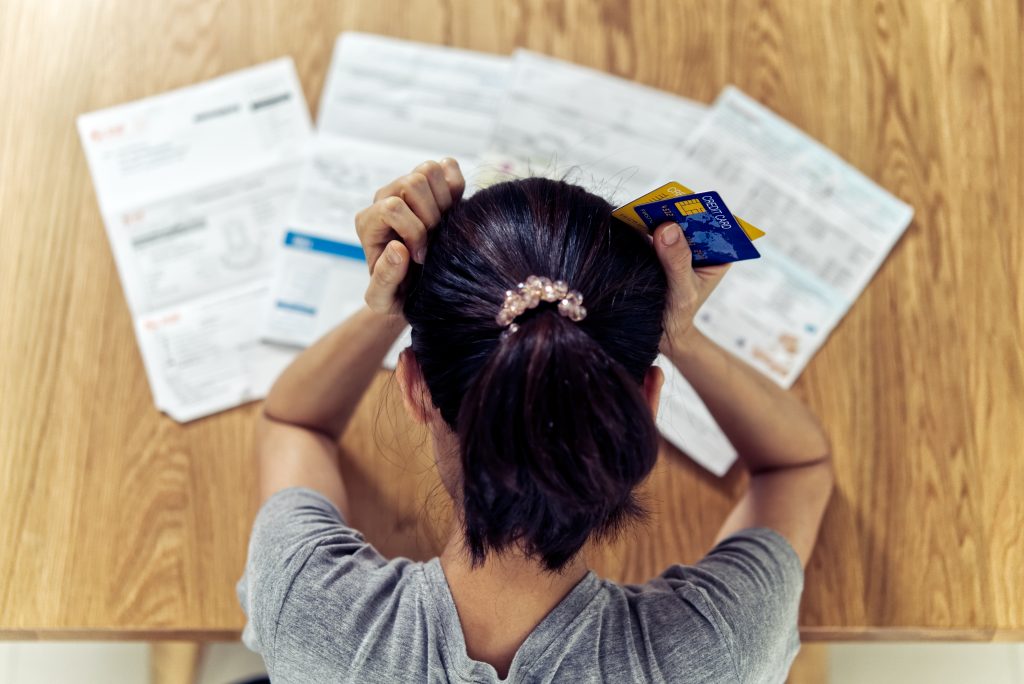Spending more than you earn
If you consistently earn more than you spend the difference is joy. If you usually spend more than you earn the difference is misery. The difference between what you earn and what you spend is called net disposable income or net Disposable Income. Earnings of course are what you get into your hand after tax and National Insurance contributions and other at source deductions such as pension contributions are excluded. Should you be lucky enough to have other unearned income, such as rental income from a lodger, you should add this onto your income to arrive at your total Disposable Income.
In the first scenario your Disposable Income is positive where you have surplus money left over, after you have paid all your living expenses including your priority and recurring bills and made all the contractual payments on your loans, credit cards, store cards and overdrafts. You can save this surplus or you can use it to reduce the balances on your debts further or you can spend it or you can even give it away if you want to. Hence, such a difference is joy!

In the second scenario, your Disposable Income is negative. While you may be able to pay your living expenses including your priority and recurring bills you have insufficient money left over to make even the minimum contractual payments on your loans, credit cards, store cards and overdrafts. As a result, month after month, the balances on these debts increase as penalties and late payment charges increase the debts even more. Hence, such a difference is misery.
How do you change such a difference from misery to joy? By earning more or spending less.
Yes, we all wish there was such a magic wand. In truth however there are solutions provided you are willing to address the issue. It’s a bit like giving up smoking. You have to have the will to tackle the problem. Increasing income may be difficult but sometimes there are opportunities which we overlook. For example, can we take in a paying lodger? Can we change our work shift from say days to nights or weekends? Can we take on a second perhaps part-time job?
What about the spending side of things? Do we need a car? Could we make do with public transport? Can we cut back on socialising, entertaining, smoking, retail therapy or holidays?
Only one way to find out – make a list! Or, rather, make a number of lists. The first list will go on a blank page entitled ‘INCOME’. On this page, we will jot down all sources of income. If married or co-habiting the income items will include the income of our spouse or partner. Let’s call this page ‘HOUSEHOLD INCOME’. Let’s not forget housing benefits, child benefits, child maintenance payments coming in, pensions, interest from investments, from dividends and from tips.
The second list will be entitled ‘SPENDING’ or ‘EXPENDITURE’. The items on this page will start with the essentials for living: shelter, food & drink, clothing, water, heat & light, transport. These are expenses we simply must pay to be able to live. So the first item should be the biggest, the mortgage or rent. Housekeeping covers a multitude but food and drink are essential for life, let alone living! And so we go on, listing every item on which we spend money regularly (every day, week and month) or intermittently (e.g. once a year, such as TV licence, car insurance or road tax). We need to itemize the list in as detailed a way as possible, ensuring we put the amount of expenditure against each item.
Next, we add up the totals for ‘HOUSEHOLD INCOME’ and ‘EXPENDITURE’. Now let’s compare our totals and calculate the difference or Disposable Income. Let’s hope that there is sufficient Disposable Income to make the contractual payments on all loans, credit cards, store cards and overdrafts. If the answer is yes, then we have joy! If the answer is no, we have misery, at least for the time being. What can we do about it? Well, if we cannot increase income we must try to reduce expenditure. Let’s look at each item and see where we can cut back. If we are still in negative territory after making all the cutbacks that we can then we must find a new solution. We may be insolvent. It may be time to seek third party advice to identify solutions.
Solutions may include negotiations with creditors or entering a debt management plan, or obtaining a debt relief order, or entering into an individual voluntary arrangement or even petitioning for bankruptcy. There may be other possible solutions such as selling an asset such as a house or obtaining financial assistance from a relative or family friend. All these options can be explored with help from organisations such as CAB or Stepchange or from one of the many excellent fee-charging commercial insolvency advice firms out there. The important thing is to do something because misery will not go away on its own.